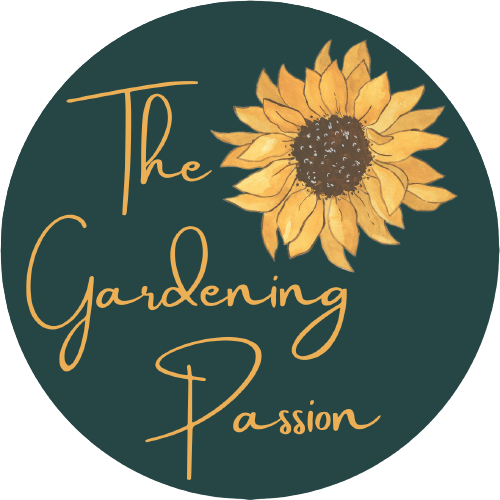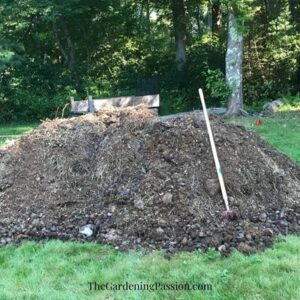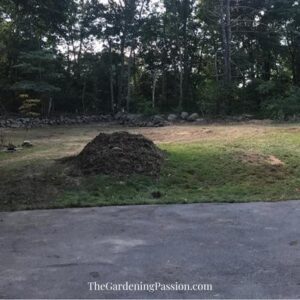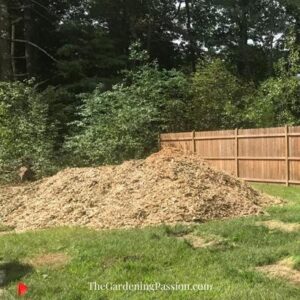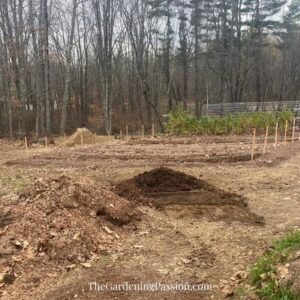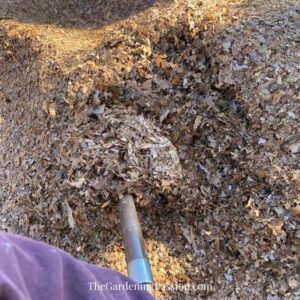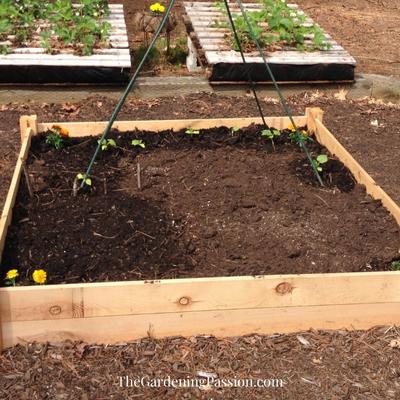
I’ve been building soil for my gardens for at least 15 years. One year when I first started gardening, I added another bed rather hastily. I wanted to use some empty space and hopefully fill it with beans. So, I threw up another premade cedar box and chose a bagged soil from a big box store. I didn’t recognize the brand, but it said organic, so I thought, ‘How bad could it be?’ Well, the soil was horrific. Besides the fact that I found a Lee Press-On nail (gross!) in it, not only my green bean seedlings were stunted, but they eventually died altogether! I couldn’t believe it!
Since then, I’ve been a little picky about my soil. These days we build our beds in a trench with a modified hügelkultur method. Regardless, we amend and mulch the garden beds in the spring before planting. Then amend with compost and mulch again to put the garden to bed for the winter. I spend half the gardening season constantly building my soil because what you get out of your soil is only as good as what you put into it.
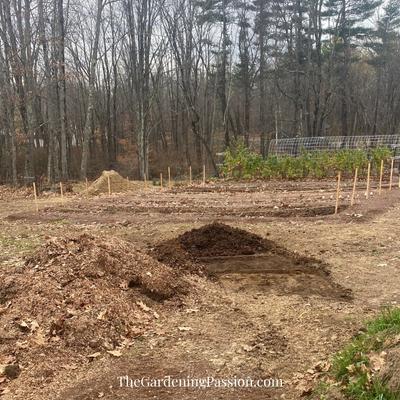

Why Amend Garden Bed Soil
Whether you have traditional garden beds or raised garden beds, it’s important to amend your garden bed soil. Someone once told me to think of my soil like a bank account. If you keep adding deposits (organic materials), your bank account (garden soil) gets healthier. If you keep making withdrawals (growing plants every year) without making deposits, your bank account (garden soil) weakens. The more deposits of organic materials to your garden soil, the healthier it is. Unless your plants bring in a soil-borne disease, you won’t ever need to replace your raised bed soil; just maintain it by adding quality organic materials. Robust soil = healthy plants = less insect pressure.
How to Amend Garden Bed Soil
The best way to amend your garden soil in an existing garden is to top-dress the garden soil with 2-4” of compost each season. With the aid of garden microorganisms and garden insects, the compost will break down, improving the soil structure and fertility and feeding your plants for healthy growth.
- Evenly spread 2-4” of compost across your garden beds.
- Gently till amendments into your soil. When mixing in your compost, only mix the top 1” of the original soil. Soil has a complex network that is best left undisturbed. The earthworms and other beneficial insects will draw the nutrients down into the soil.
- Cover the soil with mulch to protect the soil, keep moisture in the soil, reduce weeding, and feed your soil bank over time. (My absolute favorite mulch is shredded leaves.)
The Best Amendments for Raised Garden Beds
- Worm castings – increase soil’s water retention, improve soil aeration, and anchor plant nutrients that would otherwise leach away with water. Castings also feed beneficial soil microorganisms that produce, store, and slowly release plant nutrients into your soil to feed plants.
- Homemade compost
- Coast of Maine Organic Raised Bed Mix – A fully cured compost blend including sphagnum peat moss, dehydrated poultry manure, lobster and crab shell meal, greensand, biochar, worm castings, and mycorrhizae.
A word about fertilizers
All fertilizers are not equal. “Fertilizer” is a broad term that can include some unsavory items you wouldn’t necessarily want in your soil where you are growing fruits and vegetables you will eat. BioSolids are an example. BioSolids can be an ingredient in some organic fertilizers. But do you want them in your garden? Absolutely NOT! Biosolids generally refer to stabilized municipal wastewater solids but can refer to domestic septage (the solids at the bottom of a septic tank).
If you live in New England, you have likely seen a lot of recent news coverage from Maine about polluted farmland using biosolids (a commonly used fertilizer in past decades). However, these farmers are now showing PFAS Levels off the charts in their farm animals and their farm animal products. So the short answer; do your research on your compost and fertilizer. I, personally, avoid biosolids like the plague. But unfortunately, there is too much uncertainty at this point and long-lasting adverse effects are showing scary, scary results to trust BioSolids.
When to Amend Garden Bed Soil
Simply put, twice a year. Before you plant and in the fall, when you are closing your garden down for the year. Feed that garden soil bank, so it will keep feeding you!
Do you have raised garden beds in your garden already? How do you amend your soil?
~ Lola
“There are no gardening mistakes, only experiments!”
Enjoy your new garden beds, and please comment – I’d love to hear about your gardens!
Materials to build raised garden beds yourself!
This post may contain affiliate links. These affiliate links help support this site. For more information, please see our disclosure policy. Thank you for supporting The Gardening Passion!
Gardens we’ve built
Why I Garden; if you grow it, they will eat it
Community Oasis Garden; exploring the passion
The Gardening Passion Expands; the garden that created a bidding war
Quick Turn Garden; two years and counting
The Empty Nest Garden; totally out of control
Coops we’ve built
How NOT to Build a Chicken Coop
The Bored Engineer’s Coop
This content was originally published at The Gardening Passion and is copyrighted material. If you are reading this on another website, it is being published without consent.
